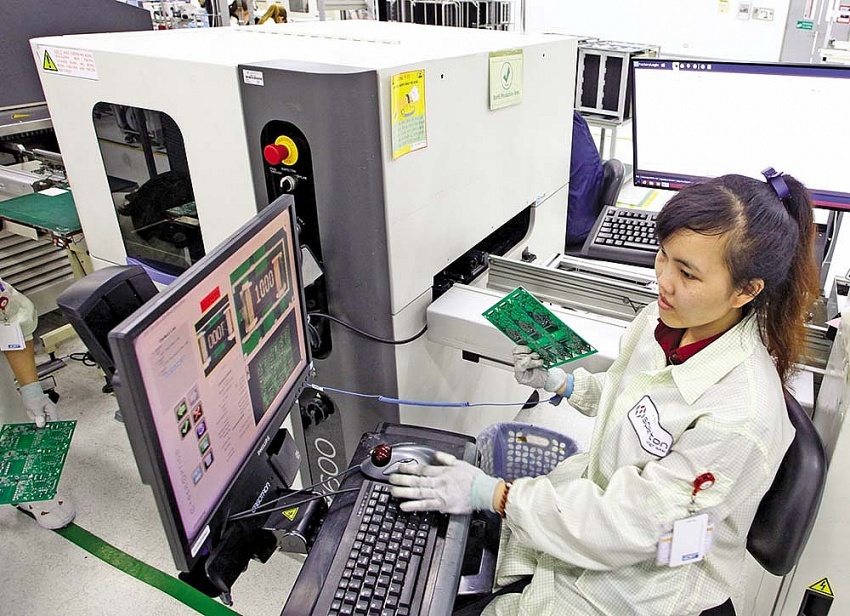Vietnam thirsty for semiconductor human resources
Speaking with VIR at the kick-off session to advance Vietnam's role in the global semiconductor industry, held on September 18 in Ho Chi Minh City by the International Technology Security & Innovation Fund (ITSI Fund), Quang Dam Le, general director of Marvell, acknowledged that Vietnam's human resources are not yet fully prepared to elevate the semiconductor chip industry to a higher level.
"I believe Vietnam is making great efforts and is on the right track to achieve that position," Dam said.
As one of the leading chip designers in the United States, Marvell has operated in Vietnam for 11 years, initially with just a dozen engineers. Today, the company employs more than 400 engineers. This progress surpasses the 50 per cent growth target set within three years by Marvell’s chairman, Matt Murphy, during the Vietnam-US Summit on investment and innovation in September 2023.
According to Dam, Vietnam has a strong foundation in technology and engineering, and Vietnamese youth excel in math, engineering, and science.
"Graduates in electronics fields can easily transition into the semiconductor industry because they have a solid background in science, electronics, physics, and chemistry," Dam said, noting the growing pool of students entering semiconductor development.
“Compared to Southeast Asia, Vietnam's human resources have strong basic knowledge. However, the scale of universities remains small, and their quality is limited compared to regional and global institutions.”
Meanwhile, Tran Trung Tinh, rector of Can Tho University, highlighted that semiconductors represent a high-tech industry, and Vietnamese universities must fully leverage available resources to train talent for this sector. Can Tho University has been offering training in electronic engineering, computer engineering, technical physics, and electrical engineering for over 20 years.
Building on these strengths, the university plans to enrol 90 students in semiconductor circuit design, based on computer engineering, starting in 2024. “In 2025, we aim to introduce a microelectronics engineering major, based on technical physics. Both fields will cover semiconductor circuit design, assembly, testing, and packaging,” Tinh said.
 |
| Semiconductor production at Sparton Binh Duong Company. Photo: Le Toan |
Vietnam is one of eight strategic countries selected by the United States to develop human resources for assembling, testing, and packaging microchips under the International Technology Security & Innovation Fund. The programme aims to improve the business environment and expand the skilled workforce to support the global semiconductor supply chain.
Vietnam has launched a series of strategic sessions to strengthen its role in the global semiconductor industry, focusing on human resource development and public policy. The country aims to train a highly skilled team of engineers by combining academic knowledge with practical experience from businesses.
Vo Xuan Hoai, deputy director of the National Innovation Centre ( under the Ministry of Planning and Investment, emphasised that the ITSI Fund’s training programmes will focus on practical skills rather than just theoretical learning. “Based on training by Arizona State University, the programme will coordinate with major global integrated circuit (IC) technology units to provide trainers with hands-on skills and knowledge,” Hoai said.
However, to ensure both quantity and quality, Dam from Marvell stressed the need for cooperation between businesses and universities. “It can’t just be a one-way collaboration where businesses simply hire graduates. It must be a two-way partnership that includes scholarship programs, sponsorship of practice rooms, and scientific cooperation, allowing students to study and work simultaneously,” Dam said.
“To rapidly integrate into the semiconductor industry, there are no shortcuts. It requires a long-term, sustainable training pathway, involving cooperation between the government, universities, and businesses,” Dam emphasised.
Le Quan, senior faculty member at Fulbright University Vietnam, stated that Vietnam is aiming to train 50,000 engineers by 2030, including 35,000 for assembly, inspection, and packaging activities. “The demand for human resources will continue to grow as foreign enterprises shift production from other countries to Vietnam to meet non-China product requirements. The demand increases with the rise in orders, which is expected to grow by 15 per cent or more per year,” Quan said.
Currently, Vietnam’s IC design workforce numbers around 5,000 people. By the end of 2024, the value of Vietnam's semiconductor industry is expected to surpass $6.16 billion, establishing the country as a key production hub for global semiconductor enterprises.
| US shows support for Vietnam's semiconductor industry The United States and Vietnam marked the first anniversary of its Comprehensive Strategic Partnership by launching workshops on semiconductor workforce development and public policy workshops. |
| Amkor Technology in negotiation to export semiconductor products Amkor Technology, which operates a mega factory for semiconductor assembly and testing in the northern province of Bac Ninh, is in negotiation with an additional six partners to export semiconductor products. |
| Vietnam to launch investment incentives for semiconductor industry Vietnam is set to introduce a robust incentive framework to selectively attract foreign investment into high-tech industries, particularly in the semiconductor and electronics sectors, to be backed by central and local government budgets. |
What the stars mean:
★ Poor ★ ★ Promising ★★★ Good ★★★★ Very good ★★★★★ Exceptional
Related Contents
Latest News
More News
- Businesses ramp up production as year-end orders surge (December 30, 2025 | 10:05)
- Vietjet chairwoman awarded Labour Hero title (December 29, 2025 | 13:06)
- How to unlock ESG value through green innovation (December 29, 2025 | 10:03)
- AI reshapes media and advertising industry (December 29, 2025 | 08:33)
- FPT and GELEX sign deal to develop blockchain tech for global markets (December 29, 2025 | 08:29)
- Vietnam’s GDP forecast to grow by 9 per cent in 2026 (December 29, 2025 | 08:29)
- Women entrepreneurs are key to Vietnam’s economic growth (December 29, 2025 | 08:00)
- Vietnam's top 500 value-creating enterprises announced (December 27, 2025 | 08:00)
- The PAN Group shaping a better future with ESG strategy (December 26, 2025 | 09:00)
- Masan Consumer officially lists on HSX, marking the next phase of value creation (December 25, 2025 | 13:20)

 Tag:
Tag:



















 Mobile Version
Mobile Version